As a pet owner, you want the best for your feline friend, and one of the most important aspects of their overall health is their vision. Your cat’s eyes are not only windows to their world but also an essential part of their physical and emotional well-being. Because cats rely heavily on their vision for hunting, navigation, and communication, maintaining healthy eyes is crucial to ensuring a happy, comfortable life for your pet.
In this article, we will explore how to keep your cat’s eyes healthy, the common eye problems cats face, and how to prevent and treat eye conditions. Let’s dive in!
Understanding Cat Eye Anatomy and Vision
Before diving into the specifics of maintaining your cat’s eye health, it’s essential to understand the unique features of a cat’s eyes.
The Anatomy of a Cat’s Eye
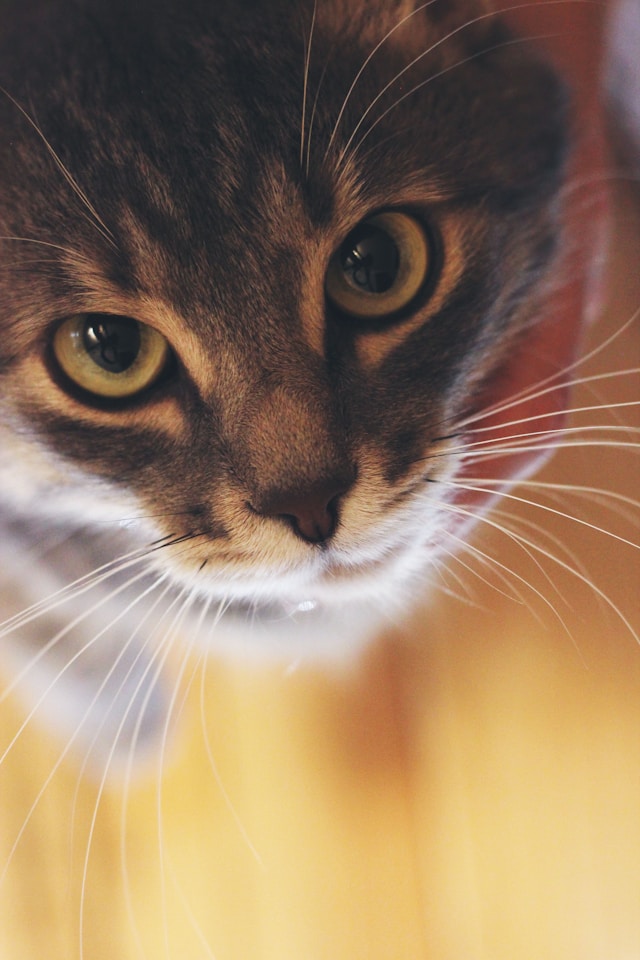
Cats have an extraordinary visual system, and their eyes are adapted to their hunting lifestyle. Some key features include:
- Large Corneas: A cat’s corneas are larger than those of humans, which helps them absorb more light, allowing them to see better in low-light conditions.
- Vertical Pupils: Cats have vertical slit-shaped pupils that help them regulate the amount of light entering the eye. This adaptation allows them to see well in both bright daylight and dim lighting, such as dawn or dusk.
- Tapetum Lucidum: This is a layer of tissue behind the retina that reflects light that passes through the retina back into the eye, enhancing their ability to see in the dark. It also gives cats’ eyes a characteristic glowing appearance when light shines on them at night.
- Field of Vision: Cats can see a wide field of vision, approximately 200 degrees, compared to a human’s 180-degree field of view. This gives them excellent peripheral vision to detect prey or other movements in their environment.
Common Cat Eye Conditions
Just like humans, cats can suffer from various eye conditions. Some are minor and temporary, while others may require medical intervention. Common eye problems in cats include:
- Conjunctivitis: Also known as pink eye, conjunctivitis is an inflammation of the conjunctiva (the pink membrane that covers the inside of the eyelids and the white part of the eye). It can be caused by infections, allergies, or irritants.
- Cataracts: Cataracts occur when the lens of the eye becomes cloudy, leading to vision impairment or blindness. Cataracts are more common in older cats and may be associated with diabetes.
- Corneal Ulcers: These are open sores or lesions on the cornea that can cause pain, squinting, and discharge. They are often caused by trauma to the eye or infection.
- Dry Eye (Keratoconjunctivitis Sicca): This condition occurs when the eye doesn’t produce enough tears, leading to irritation and inflammation. Dry eye is often caused by an underlying health condition.
- Uveitis: Uveitis is inflammation of the uvea, the middle layer of the eye. It can cause eye redness, squinting, and sensitivity to light. Uveitis can be triggered by infections, trauma, or systemic health conditions.
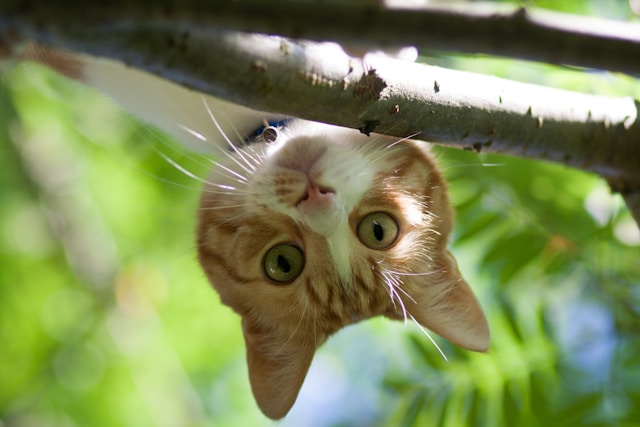
Photo by Koen van Gilst on Unsplash - Glaucoma: Glaucoma is an increase in intraocular pressure, which can lead to vision loss and blindness. It often occurs due to other health conditions, such as inflammation or eye injury.
- Retinal Diseases: These include conditions that affect the retina, such as retinal degeneration, which can lead to vision loss.
How to Keep Your Cat’s Eyes Healthy
Fortunately, many of these common eye conditions can be prevented or managed with proper care. Here are some tips to help keep your cat’s eyes healthy:
1. Regular Veterinary Check-ups
Just like humans, cats need regular health check-ups to ensure they remain healthy and free from potential eye problems. An annual or biannual visit to the vet can help detect any early signs of eye conditions. During these visits, your vet will examine your cat’s eyes for signs of infection, inflammation, or other issues.
2. Maintain a Clean Environment
A clean home environment is crucial for preventing eye infections in cats. Dust, allergens, and debris can irritate the eyes and lead to conditions like conjunctivitis. Regularly clean your cat’s living spaces and ensure that their bedding is fresh and free from dirt. Additionally, avoid using harsh cleaning products or chemicals around your cat, as these can cause eye irritation.
3. Keep Your Cat’s Eyes Clean
Sometimes,
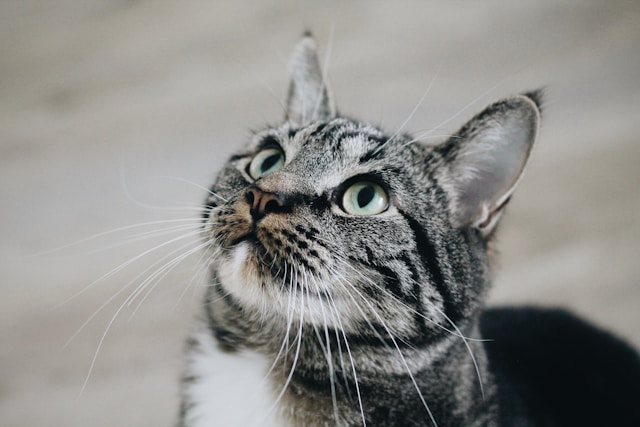
cats develop discharge in the eyes, particularly if they have a mild eye infection or allergies. Use a soft, clean cloth to gently wipe away any discharge from your cat’s eyes. Always wipe from the corner of the eye (near the nose) outward to avoid pushing debris into the eye. Never use harsh materials or products that could irritate the delicate skin around your cat’s eyes.
4. Protect Your Cat’s Eyes from Injury
Cats can sometimes get into fights with other animals or injure their eyes while playing or hunting. To help prevent eye injuries, ensure your cat’s environment is safe and free from sharp objects. If your cat is an outdoor cat, be aware of the risks of injury, and consider keeping them indoors, especially during peak hours of wildlife activity. Additionally, make sure their toys are safe and won’t cause harm during play.
5. Watch for Changes in Behavior
Cats are masters at hiding discomfort, but they often show subtle signs when something’s wrong. If you notice your cat squinting, pawing at their eyes, or avoiding bright light, it could be a sign of an eye problem. Watch for discharge, excessive tearing, or redness around the eyes. If you notice any of these signs, it’s essential to seek veterinary care right away.
6. Provide a Nutritious Diet
A balanced, high-quality diet is essential for your cat’s overall health, including their eye health. Omega-3 fatty acids, such as DHA and EPA, play a role in maintaining the health of the retina and the tissues in the eyes. Feeding your cat food rich in vitamins A, E, and C can also help protect their eyes from oxidative stress and age-related degeneration.
7. Avoid Smoke and Irritants
Secondhand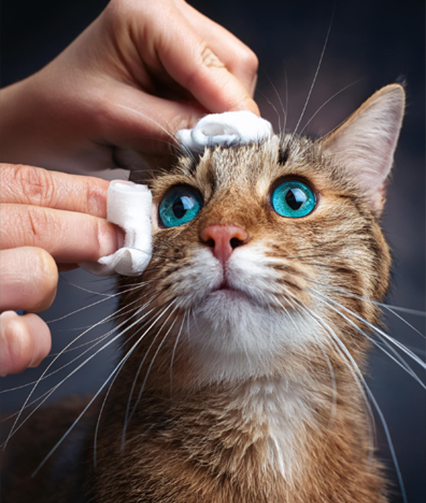 smoke, perfumes, cleaning products, and other irritants can affect your cat’s eyes. If you smoke, try to do so away from your cat, and avoid using strong chemicals in their vicinity. Air purifiers can help reduce airborne irritants that might affect their eyes, especially if your cat suffers from allergies or sensitive eyes.
smoke, perfumes, cleaning products, and other irritants can affect your cat’s eyes. If you smoke, try to do so away from your cat, and avoid using strong chemicals in their vicinity. Air purifiers can help reduce airborne irritants that might affect their eyes, especially if your cat suffers from allergies or sensitive eyes.
8. Consider Supplements for Eye Health
Some pet owners use supplements formulated to support eye health in cats. These supplements often contain ingredients like omega-3 fatty acids, lutein, and zeaxanthin, which are known to support retinal health and prevent age-related changes. Always check with your veterinarian before giving your cat any new supplements to ensure they’re safe and appropriate for your pet.
9. Prevent Dry Eye (Keratoconjunctivitis Sicca)
Dry eye is a common condition in cats, especially as they age. This occurs when the tear glands don’t produce enough moisture to keep the eyes lubricated. Symptoms include excessive blinking, squinting, and mucus discharge. If your cat is showing signs of dry eye, your vet may recommend lubricating eye drops or other treatments to help keep their eyes moist.
10. Be Aware of Cat-Specific Eye Diseases
Some breeds are more prone to certain eye conditions. For instance, Persian cats and other brachycephalic breeds (cats with flat faces) are more likely to experience tear duct issues, corneal ulcers, and other eye problems due to their unique facial structure.
Siamese cats may be more prone to developing retinal issues. If you have a breed that is known for specific eye concerns, be extra vigilant about regular check-ups and eye care.
When to See a Vet
If you 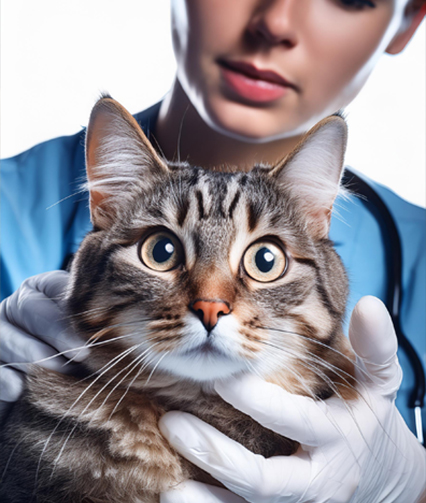 notice any of the following signs in your cat, it’s important to seek veterinary care promptly:
notice any of the following signs in your cat, it’s important to seek veterinary care promptly:
- Red or inflamed eyes
- Excessive tearing or discharge
- Squinting or closed eyes
- Sensitivity to light (photophobia)
- Cloudiness or changes in eye appearance
- Signs of pain, such as pawing at the eyes or excessive blinking
- Visible ulcers, scratches, or wounds on the eye surface
Early diagnosis and treatment can prevent further damage and help preserve your cat’s vision.
Conclusion
Your cat’s eyes are an essential part of their sensory system and overall well-being. By staying informed about common eye problems, maintaining a clean environment, and providing a nutritious diet, you can help ensure that your cat’s eyes remain healthy throughout their life. Regular veterinary visits are key to detecting any early signs of eye conditions and preventing potential vision loss. With proper care, your feline friend can continue to enjoy the world around them with clear, bright eyes.
By following the steps outlined in this article, you’ll be giving your cat the best chance to live a long, healthy life with excellent vision. Whether your cat is a playful kitten or a seasoned senior, their eyes deserve the best care possible!


